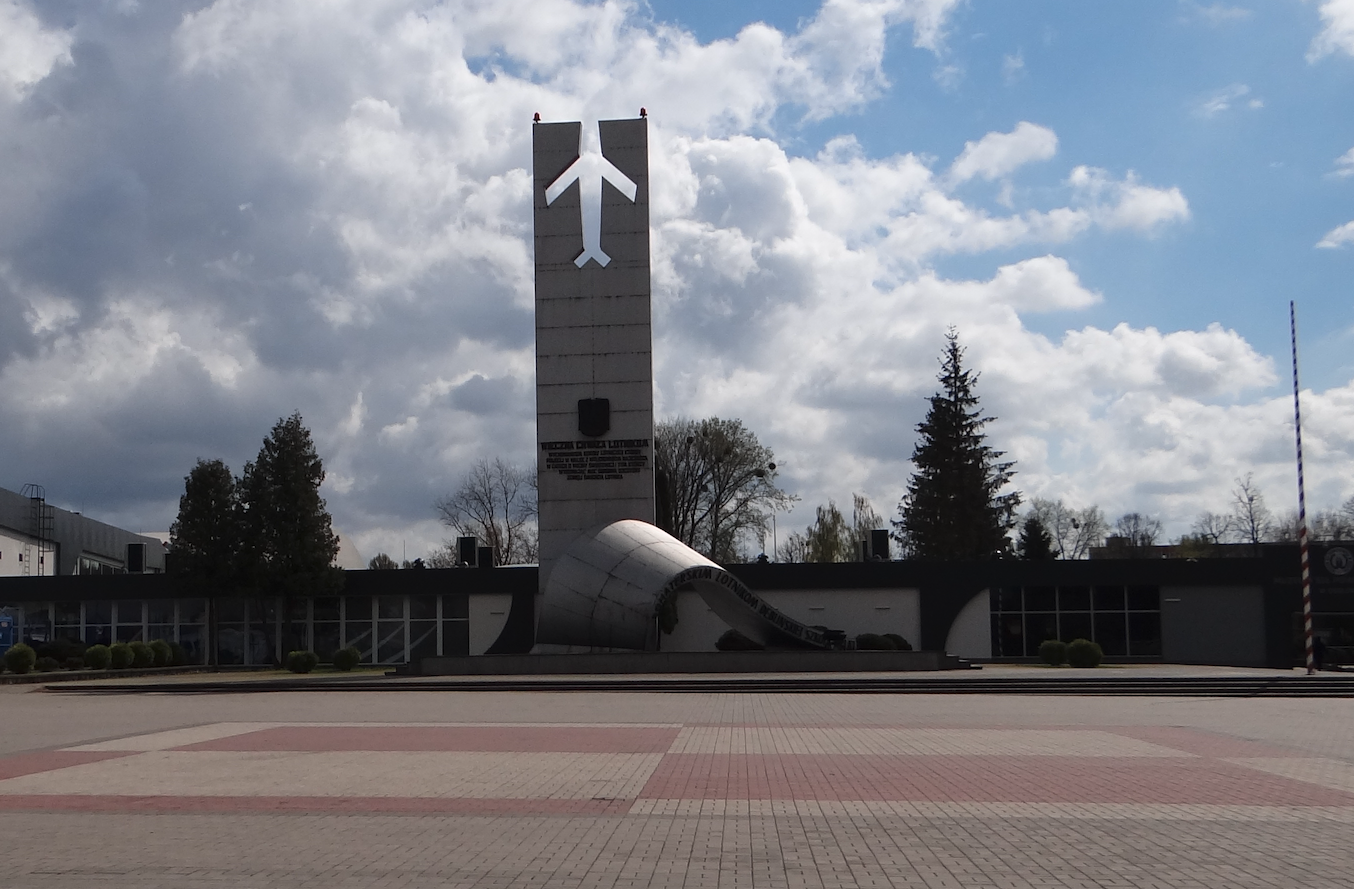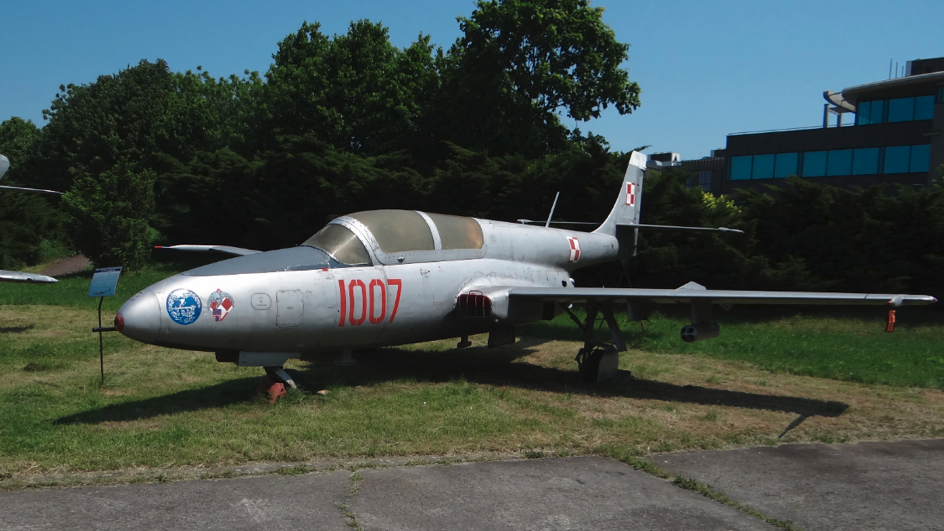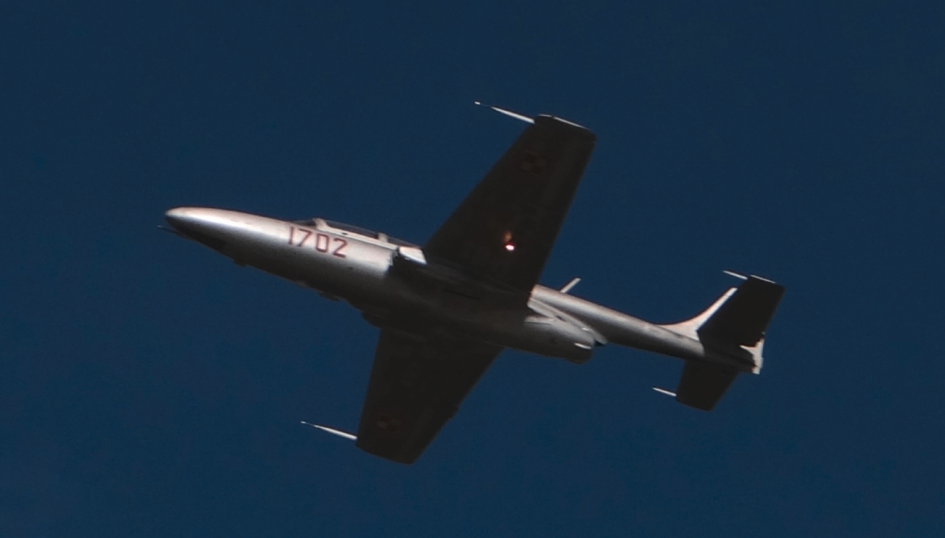Kraków 2017-06-07
Aviation training in Poland. 1960-1970.
60 years is a period of relative stabilization of aviation training in Poland. Although the international situation was still tense. In August 1961, the Russians and German communists built a wall in Berlin, dividing the city into two zones of occupation. The idea was for as few people as possible to escape from the communist "paradise". The wall was one of the most famous symbols of the Cold War and the division of the German state. Many people were killed while trying to cross the guarded border systems. The exact number of victims is disputed and uncertain. Various sources report from 136 to 238 deaths.
In addition, the CCCP has installed ballistic missiles in Cuba. This sparked a harsh US reaction, and ultimately Tsar Khrushchev withdrew the missiles from Cuba.
The School of Eaglets in Dęblin.
The School of Eaglets in Dęblin attracted young boys like a magnet. Especially those who have already undergone parachute or glider training and caught the so-called aviation bug. The school in Dęblin was the only chance to become a professional pilot. Initially in the Military Aviation, and later often in Civil Aviation.
1961.
On November 14, 1961, the OSL Commander, Lt. Col. pil. Eugeniusz Pniewski ordered the transformation of the 4th Air and Technical Regiment into the 2nd Supply Battalion (Military Unit 2760) on November 25, 1961. The battalion commander was Major Witalis Michalak. The tasks of the military unit remained unchanged.
In the period 1963-1969, the Supply Battalion was transformed into the 4th Supply Regiment (Military Unit 2760). The regiment commander was Lt. Col. Dipl. Tadeusz Ragus. In 1977. there was a change in the position of the commander of the 4th Supply Regiment. On June 23, 1977, Lt. Col. Dipl. Józef Zalewski. 4. Pułk Zaopatrzenia, an independent economic body, constituting the basic link of WOSL im. Janek Krasicki, was intended for material and technical supplies and to secure the living conditions of cadets, cadets and employees of the WOSL Headquarters. The regiment impeccably carried out the process of securing the training of units (58. LPSzk, 23. LESzk), the Aviation High School and the Eagle Aero Club. The unit operated in this form until 1994.
1962.
Education was extended from 2.5 to 3 years. In 1962, the health criteria for applicants were tightened again. The reason was the introduction of more supersonic airplanes into the armament. As a result, only 20-30% of applicants met the health requirements.
1964.
Already at the beginning of the 60s, it was noticed that in the changing conditions the maintenance of two aviation schools was redundant. In 1964, a decision was made to dismantle the Officers' Aviation School No. 5 in Radom, which made the school in Dęblin the only military school educating pilots.
1967.
In 1967, the military vocational education was reformed. In general, two types of military schools were established for the future (and also the present) professional soldiers. Standard-bearer schools, whose graduates received the rank of junior ensign and education equal to civilian secondary school, that is, the title of technician and high school diploma. And officer schools, the graduate of which received the rank of second lieutenant and education equal to a civil university, that is, the title of engineer (master-engineer). A total of 15 schools of higher education were established. As a curiosity we will say that the officer schools had names; College of Officers ... or College of Officers .... The former educated specialists needed only in the army. The latter educated specialists whose profession had a civilian equivalent.
The then Commander - Rector, Brig. Gen. pil. dr. Józef Kowalski, who during 18 years of commanding the university (1963-1981) made a breakthrough in training aviation personnel. Thanks to him, there was a rapid scientific development of the teaching staff and the expansion of the school's infrastructure. Thanks to the efforts of General Józef Kowalski, as well as the staff, cadets and the society of Dęblin, a monument dedicated to the Heroic Aviators of the Dęblin School of the "School of Eaglets" was built and unveiled. On March 17, 1968, the first matriculation of the cadets of the School of Eaglets took place, the student hymn "Gaudeamus igitur" and the chivalry song "Holy Love for the beloved Motherland" sounded.

Thus, in 1968, the School in Dęblin adopted the name of the Higher Officer Aviation School, abbreviated as WOSL. The school has become the only university in Poland educating flying personnel for the army. The training program had to be modified and it was significantly extended. The duration of study was extended to 4 years (as in all higher military schools). The school became a typically technical-military one and gave graduates the rank of second lieutenant and an engineer-commander diploma.
In the first years of the School's operation in the new conditions, the Maria Curie-Skłodowska University in Lublin provided a lot of help in the field of teaching and research.
At that time, the training of cadets was carried out alternately with practical training in the air. The first three semesters, common to all faculties, were generally devoted to general polytechnic, ideologically political and partially specialized education. Semesters 4, 6 and 8 were devoted to practical training in the air (candidates for pilots) or internships in other positions, depending on the field of study. In semesters 5 and 7, further education was carried out, with a predominance of vocational and specialist subjects. But semesters at a military school are not to be compared with semesters at a civilian school. The cadet had only 30 days of vacation, and the summer training was the most intensive. You had to make the most of the flying days. At WOSL, studies were carried out in the following fields: pilot (jet, transport and helicopter), flying navigator, ground navigator, staff officer, political officer. The graduates were promoted at the turn of November and December.
In the 60 years, PZL TS-11 Iskra turbojet airplanes were introduced to training.


From 1966 to 1996, the School simultaneously educated and trained foreign students from, among others, Syria, India, Iraq, Libya, Algeria and Burma.
Air Force Technical School in Zamość.
1960.
In the 1960s, the service of the army soldiers, future junior aircraft specialists in Zamość, did not differ in any way from the service in other military units. As was the case in garrison towns, often a military band welcomed conscripts at the railway station. Already on the platform, the first commands were given to them. They were grouped into four columns and marched to the barracks.
The service began with a unitary period. About 8 weeks and lasted until the military oath was taken. Elew did all the military activities; drills, physical exercises, chemical exercises, elements of war tactics (digging in, digging tranches), marches and running runs, swimming, learning how to shoot and operate a rifle, learning songs and singing, learning military regulations, working in the kitchen and canteen, working in the boiler room , work on a farm, garden and orchard, work in warehouses, endless refilling (cleaning), taking care of hygiene and personal appearance. And what was difficult - political activities and brainwashing. An exhortation to join the party, because it was associated with additional profits, such as additional leaves, material rewards. Among the political officers there were the greatest number of those who were not worthy to wear the uniform of the Polish Soldier. They believed that they represented the only correct vision of the citizen. They most exterminated those soldiers who officially professed and practiced the Catholic faith. The extermination consisted of extra, worse and harder work, with limited time. Appointment to additional services, especially guard services.
Before the oath, the soldier was not entitled to leave or pass. Also, he could not see his loved ones. He could have received letters and parcels. Access to the telephone was very difficult, but not impossible. But such a soldier could not be sent to the front or arrested. In case of serious offenses, the soldier was handed over to the military prosecutor's office.
Only after taking the oath, the soldiers were directed to the company and school platoons with the appropriate specialization. There were 5-7 lessons a day. There was theoretical and practical learning and checking the knowledge obtained. After about 4 months of study, passing the relevant exams (in the sixth month of service), elew received the rank of private TSWL, authorization to wear the badge of an Aviation Mechanic and assignment to an aviation unit somewhere in the country. Few had the right to choose the place of further service. Usually the exemplars and party members. It was possible to find a unit closer to the family home. The soldier still had 1.5 years to serve. Further conscription came to Zamość.
1962.
In 1962, Col. pil. Aleksander Dufajn, former commander of the 16th Assault Aviation Division. During his term of office, training for the facades of the new NCO Vocational School, organized at the Zamość Technical School of Air Forces, began.
1963.
When, in 1957, mass production of PZL SM-1 (Mil Mi-1) helicopters began in Świdnik. These helicopters were introduced in large numbers to the equipment of the Air Force. The pilot training was moved from Świdnik to OSL Dęblin. A training helicopter squadron was established there, which became a forge for rotorcraft pilots. New aviation technology in the form of helicopters made it necessary to train mechanics of this equipment. The training was provided by the school in Zamość. Gradually, new helicopter mechanical specialties were introduced. It lasted for several years. After all, Zamość was practically the only place for training helicopter service specialists. Initially SM-1/2, then Mi-4, Mi-2, Mi-8, Mi-24, Mi-17, PZL Kania, PZL W-3 Sokół. During the functioning of the school, the mechanics of Mi-2 and Mi-8 helicopters were trained the most.
1965.
Around 1965, the School in Zamość underwent another reorganization. Three separate schools started to function within TSWL; non-commissioned officers, ensigns, reserve cadets. Candidates were sent to the NCO school, usually after high school, who did not associate their entire lives with the military. The non-commissioned officer school prepared aviation specialists for the basic service, who left the school with the rank of corporal and were directed to further active service in combat units. Young men who wanted to tie their lives with the army were admitted to the standard-bearer school. As applicants, they had no secondary education. Usually they went to vocational and company schools. They were taught for 3 years. They obtained the profession, the rank of junior ensign and were assigned to an air force unit. People who completed their studies, with a specific specialization, were sent to the reserve cadet school. Their studies lasted 6-9 months, after which they were sent for apprenticeship to a combat unit. Their entire ministry lasted for about 12-15 months, after which they were placed in the reserve for W-accident assignment. At that time, the Zamość garrison numbered several thousand soldiers.
Air Force Officers' Technical School in Oleśnica Śląska.
1960.
In 1960, the training period for new officers was extended to 3 years. At the same time, the corps of junior officers, i.e. professional soldiers who had already served in military units, were required to complete their education to the level of secondary school during 12-month courses, obtaining a high school diploma equal to that obtained in civilian schools.
1967.
In the period 1967-1968, the communist authorities of the Polish People's Republic, and more precisely the party of the Polish United Workers' Party, made a significant reform of civil and military education. One of the main goals was to finally expel religious education from schools. In military education, schools have been divided into; schools for non-commissioned officers (military specialists), ensigns (secondary), officers (universities) and academies. It has also become a norm to send Polish officers to graduate studies at CCCP.
In 1967, the School of Standards of the Air Force Technical Personnel was established. The student of the officer school was called a cadet, the standard officer school - a cadet, and the non-commissioned officer school - elew. Officers and ensigns became professional soldiers, and non-commissioned officers were soldiers of the drafting service, i.e. they served the obligatory period and returned to civilian life.
Graduates of the 8-year primary school and 2 or 3-year vocational school were candidates for the Standards School. The Warrant School began functioning with cadets grouped in two companies, each with four platoons. Over the next two years, more salaries increased. They were treated better than elewi, because the cadets were future professional soldiers. They had better food rations. The canteens were separate. They were served by waitresses. Even in the first semester of studies, there were shifts in specialties. It was often related to a health condition or predisposition. For example, it was then claimed that electromagnetic radiation may deteriorate eyesight. In the year of study, the cadet had 35 days of leave; 10 days around Christmas, 5 days around Easter and 20 days in September after the end of the school year. The cadet's dress code differed from the others by the corresponding patches on the sleeves. These patches also indicated which year of training the listener was.
The training lasted three years. The graduate obtained the military specialty, the rank of junior ensign, passed the secondary school-leaving examination and was assigned to a line unit. In the following year, youth from secondary schools with high school diploma were also admitted to the school for ensigns. At that time, their studies lasted only two years.
The Oleśnica School prepared teaching aids needed for the opening of two aviation schools in Syria in 1967. It was related to the Soviet rapprochement with Arab countries, mainly through the sale of weapons to them, including MiG-17 fighters. Polish involvement resulted from orders taken in the Kremlin, and not from the sovereign decisions of the Polish government. For the staff from the School in Oleśnica, it meant exotic journeys and getting to know the Near-Eastern countries.
In the mid-60s, education in the field of radio and radar equipment operation was already well developed in Oleśnica. Especially those mounted in the Lim-5 P, MiG-19 PM and MiG-21 PF / PFM fighters. But repairs of these devices were carried out in Soviet plants. Also in the mid-1960s, training for Su-7 BM / BKL / U attack aircraft service specialists began in Oleśnica. The future Su-7 technicians were considered the elite among the school's staff and students. Today, hardly anyone remembers how important a role the Su-7 planes were to play in the future war. In the entire history of the school, the most trained specialists in handling MiG-21 fighters (airframe and engine). This is not surprising, considering the number and duration of operation of these machines in the Polish Military Aviation.
1969.
At the end of the 60s, the School in Oleśnica was widely known not only in the aviation corps of the Polish People's Republic, but also abroad. She already had an excellent staff, and every year candidates for the school had better and better education. Most of the audience wanted to be trained as well as possible and to use more and more sophisticated aviation technology.
The school under the name of the General Władysław Wróblewski Air Force Officers' School operated in this form until 1970. She trained a total of 20 524 graduates, officers and ensigns.
Written by Karol Placha Hetman
